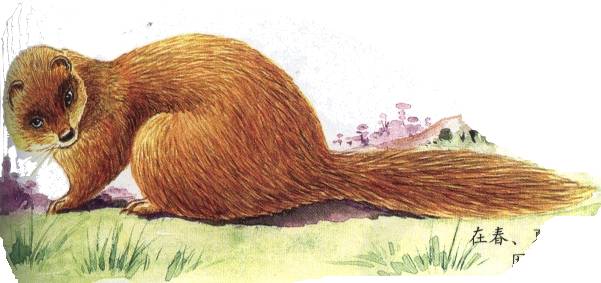1) yellow
[英]['jeləʊ] [美]['jɛlo]


黄
1.
Because the Chinese people worships the lands,cereals, and gold,being influenced by the sayings of the five elements and religion as well as paying great respects to King Huang and his descendants in the feudal times,consequently they regard "yellow" as the most noble color in China.
在封建社会中 ,由于人们对土地、五谷、黄金等物质的崇拜 ,受阴阳五行说及宗教的影响 ,对黄帝及后代帝王的遵从 ,在中国大地上黄颜色成为一种极为尊贵的色彩 ,象征着权力、社稷、尊贵、吉祥 ,具有丰富的文化内涵。
2.
The first chapter was the introduction; The second to sixth chapters were about the research of Black(黑)、White(白)、Red(红)、Yellow(黄)and Green(绿)in Chinese, in the light of historical and comparative theories and methodologies, and the early sound and etymon of these f.
本课题利用语义场理论和历史比较语言学的理论,对斯瓦德什《百词表》中跟“颜色”有关的5个核心词(“黑Black 91位”、“白White 90位”、“红Red 87位”、“黄Yellow 89位”、“绿Green 88位”)进行了系统的研究。
3) Huang Wei


黄
1.
Huang Wei’s Peng Xuan Lei Ji is the precious material,which studies the social vicissitudes in the south and north regions, Suzhou in particular, during the transitional period from the early to the middle stage of Ming Dynasty.
明人黄的《蓬轩类纪》是研究由明前期向中期过渡阶段南北地区特别是苏州地方社会变迁的珍贵材料。
4) Coptidis Rhizoma-Phellodendri Cortex


黄连-黄柏
5) Total flavonoids of astragalus


黄芪黄酮
1.
The yield of total flavonoids of astragalus and total saponins of astragalus were used as criteria of estimating the efficiency of three regulators,the results showed that the effects of regulators on total flavonoids of astragalus content was as:NAA >6-BA >2,4-D,and the effect of regulators o.
以膜荚黄芪幼叶为外植体,运用正交设计研究2,4-D、6-BA和NAA等3种植物生长调节剂组合对愈伤组织生产黄芪黄酮和黄芪皂苷的影响。
6) glycitein


黄豆黄素
1.
Determination of daidzein, glycitein, and genistein in Xuezhikang Capsula;


RP-HPLC法测定血脂康胶囊中大豆苷元、黄豆黄素和染料木素
2.
Soybean samples of 53 cultivars derived from Beijing area were used to analyze the contents of three kinds of isoflavone,namely daidzein,genistein,and glycitein for a comparison.
为比较北京地区生态条件下大豆品种间异黄酮含量的差异性,对53个品种种子中3种异黄酮(大豆苷元、染料木素和黄豆黄素)进行测定和分析。
补充资料:黄
(Siberian weasel,·Konnsky;黄鼠狼、黄狼)
分布于全国大部分省区及台湾;国外分布于西伯利亚、朝鲜 日本、克什米尔、印度、尼泊尔、缅甸和印度尼西亚等亚洲地区
体长250-390毫米,雌性小于雄性1/2-1/3。身体细长、四肢短,尾毛蓬松。体为棕黄或橙黄色,腹部色浅;鼻瑞周围、口角和额部对白色,杂有棕黄色;冬毛毛色浅淡而带光泽;尾部、四肢与背部同色。肛门腺发达。
栖息于山地和平原,见于林缘、河谷、灌丛和草丘中、也常 出设在村庄附近。居于石洞、树洞或倒木下。多夜间活 动。以小型兽类、小鸟及蛙类等为食,有时潜 入家舍盗食家禽。以臭腺放出臭气自卫。交配产仔 在夏季、孕期约2个月,每窝7-8仔。
因能捕食大量害鼠,对农林牧业有益,应予保护。
分布于全国大部分省区及台湾;国外分布于西伯利亚、朝鲜 日本、克什米尔、印度、尼泊尔、缅甸和印度尼西亚等亚洲地区
体长250-390毫米,雌性小于雄性1/2-1/3。身体细长、四肢短,尾毛蓬松。体为棕黄或橙黄色,腹部色浅;鼻瑞周围、口角和额部对白色,杂有棕黄色;冬毛毛色浅淡而带光泽;尾部、四肢与背部同色。肛门腺发达。
栖息于山地和平原,见于林缘、河谷、灌丛和草丘中、也常 出设在村庄附近。居于石洞、树洞或倒木下。多夜间活 动。以小型兽类、小鸟及蛙类等为食,有时潜 入家舍盗食家禽。以臭腺放出臭气自卫。交配产仔 在夏季、孕期约2个月,每窝7-8仔。
因能捕食大量害鼠,对农林牧业有益,应予保护。

说明:补充资料仅用于学习参考,请勿用于其它任何用途。
参考词条